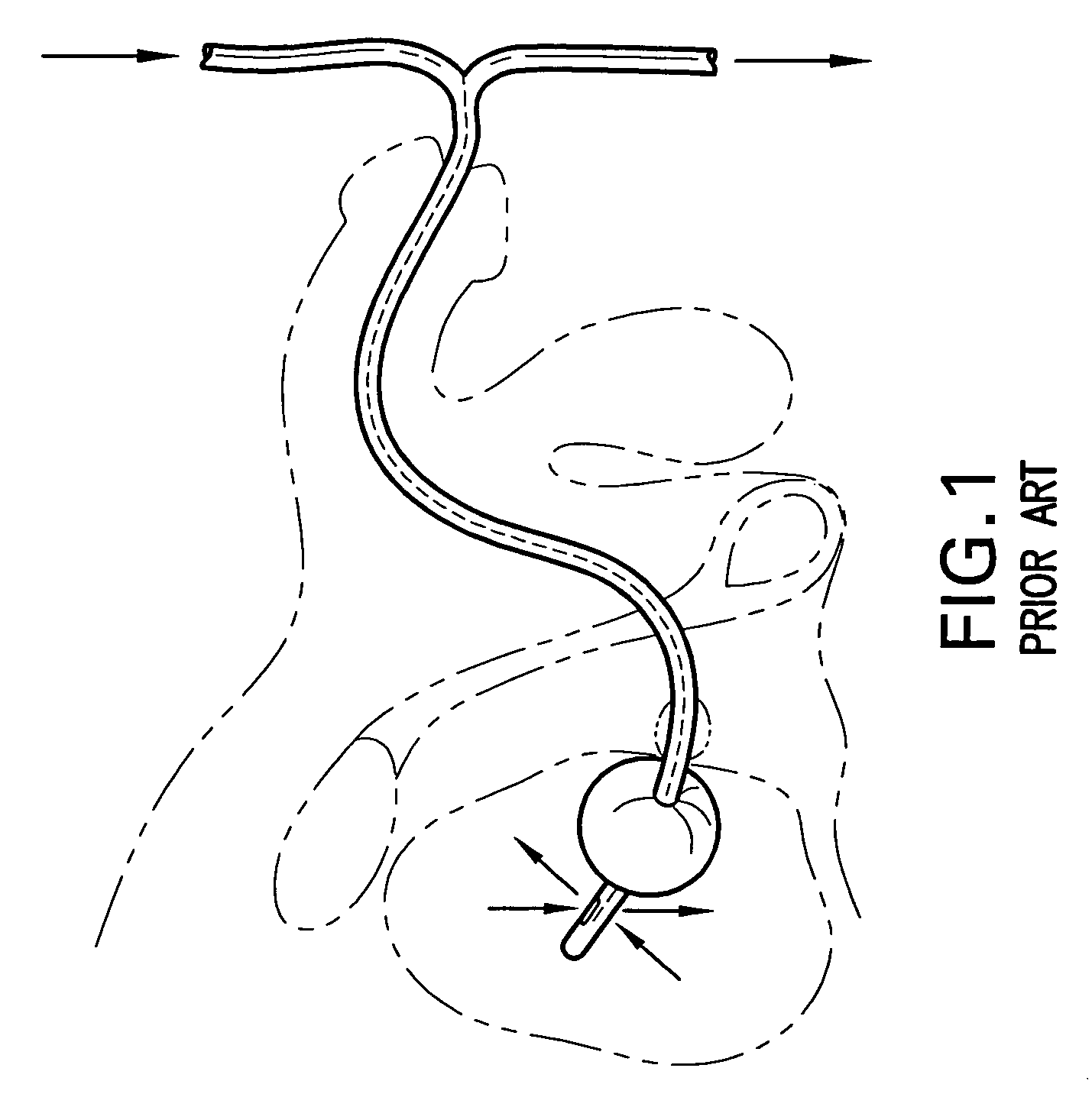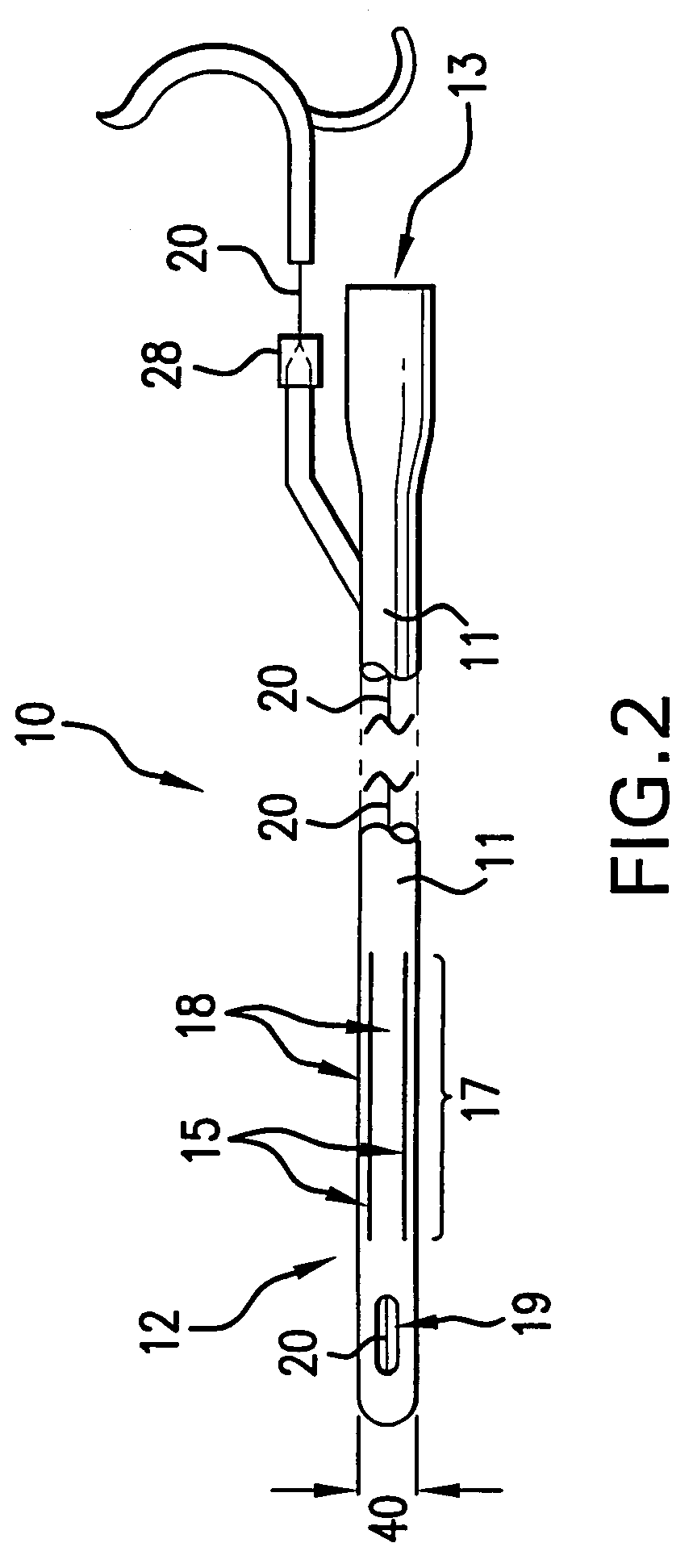Indwelling urinary catheter
a catheter and bladder technology, applied in the field of surgical devices, can solve the problems of kidney obstruction, small child's inability to urinate, renal failure, etc., and achieve the effect of sufficient stiffness
- Summary
- Abstract
- Description
- Claims
- Application Information
AI Technical Summary
Benefits of technology
Problems solved by technology
Method used
Image
Examples
Embodiment Construction
[0031]Referring now to the drawings, a urinary drainage catheter of the prior art is seen in FIG. 1, illustrating a typical Foley catheter. The retaining balloon when inflated, abuts in a continuous manner against the inner bladder wall; its drainage opening is proximal to the retaining balloon and thus allows there to be residual urine pooling at the base of the bladder. The present invention provides for non-continuous contact of the retention means with the bladder, thereby reducing the area of bladder-catheter contact and the resulting bladder wall irritation. The present subject invention further provides for drainage apertures distal to the retention means thereby facilitating complete urinary drainage, that is, eliminating any residual urine and thus further reducing bladder wall irritation. Furthermore, the catheter of the present invention can be inserted into and removed from a patient without using a stylet. In addition, the catheter components for reversably activating t...
PUM
 Login to View More
Login to View More Abstract
Description
Claims
Application Information
 Login to View More
Login to View More - R&D
- Intellectual Property
- Life Sciences
- Materials
- Tech Scout
- Unparalleled Data Quality
- Higher Quality Content
- 60% Fewer Hallucinations
Browse by: Latest US Patents, China's latest patents, Technical Efficacy Thesaurus, Application Domain, Technology Topic, Popular Technical Reports.
© 2025 PatSnap. All rights reserved.Legal|Privacy policy|Modern Slavery Act Transparency Statement|Sitemap|About US| Contact US: help@patsnap.com



